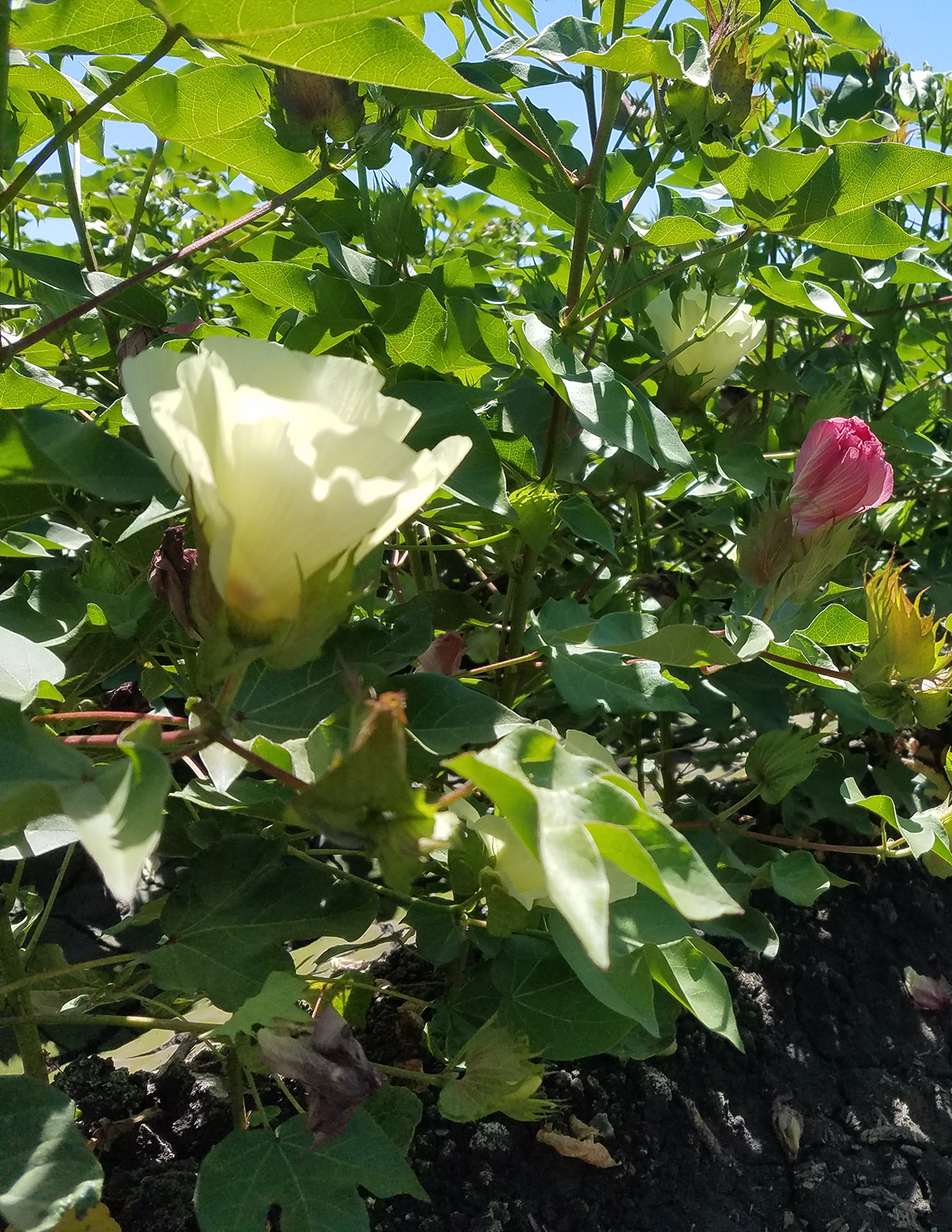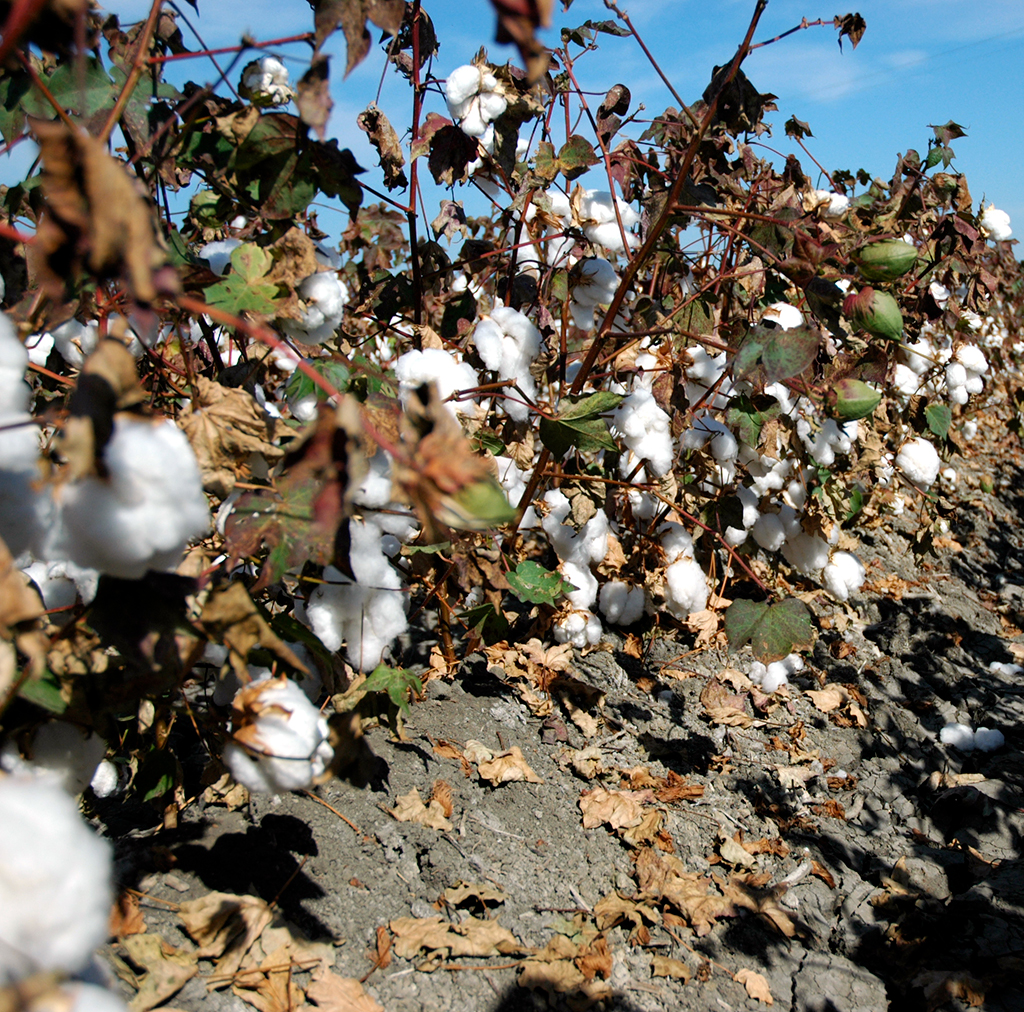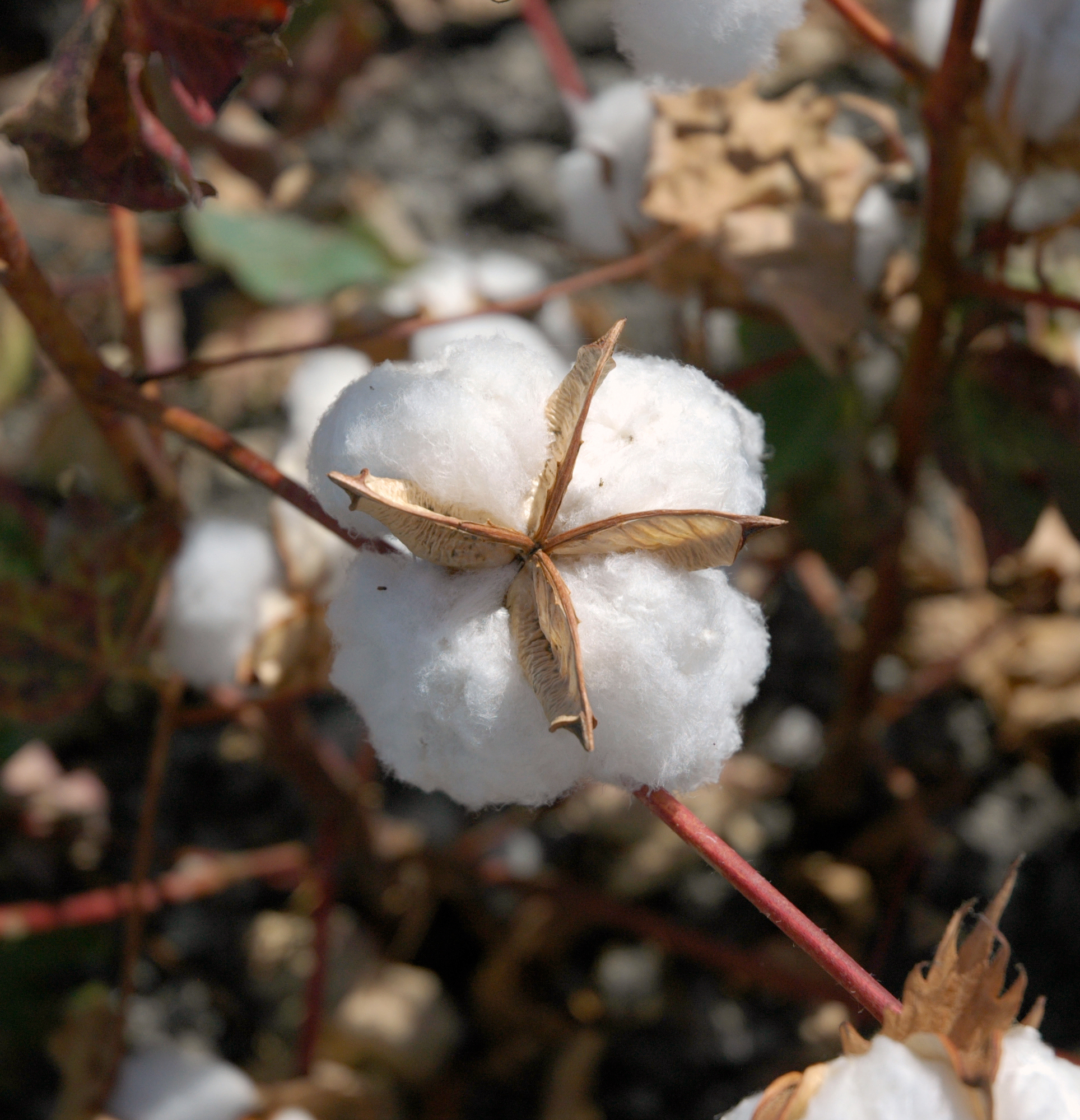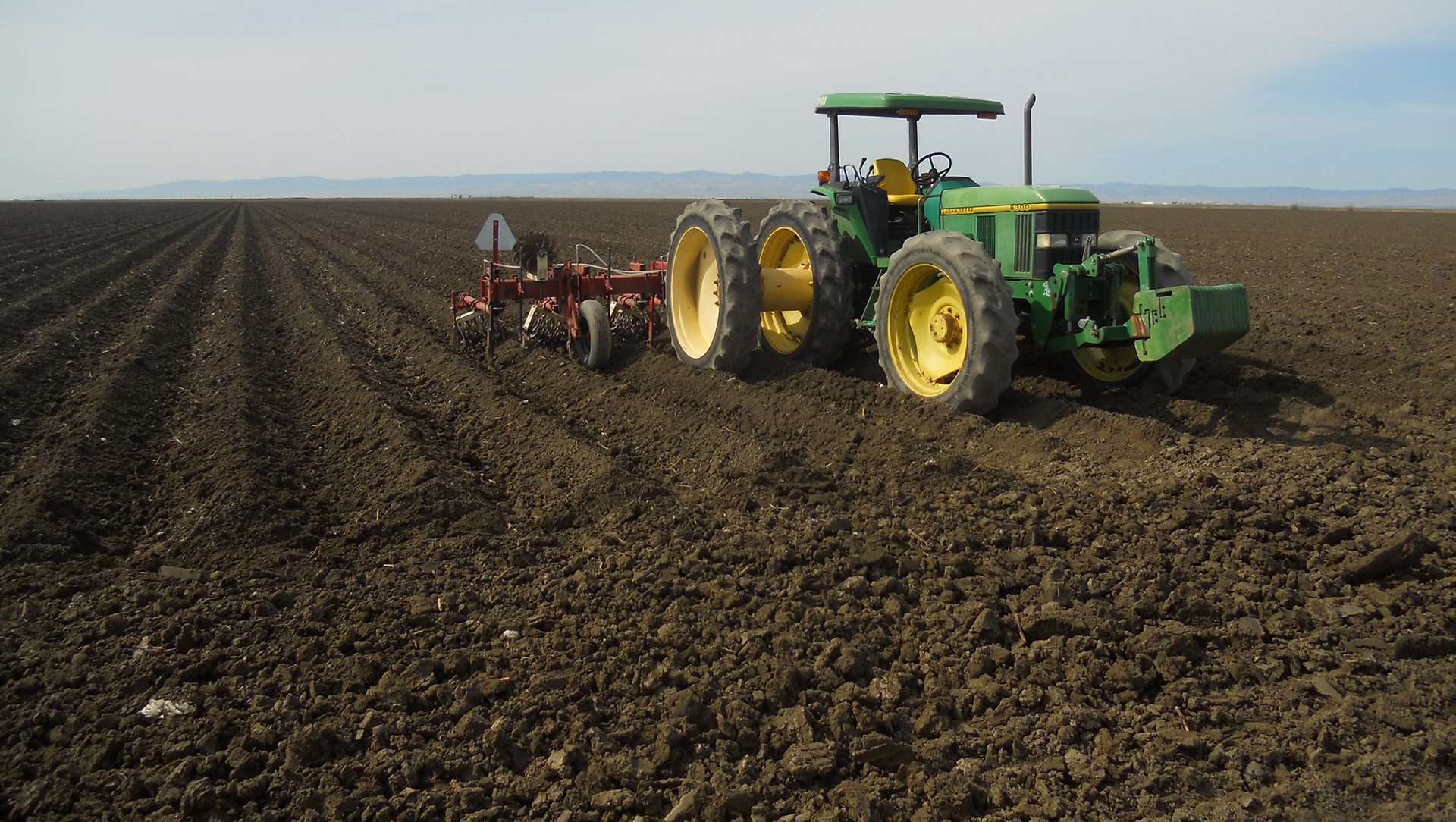
HOW IT GROWS:
Cotton is an annual crop and in California it is planted in April, taking about 180 to 200 days to reach full maturity for harvest in October. The crop starts to flower in June; as the flower dies back, the inner part of the bloom gradually develops into a fruit called the "cotton boll"; once mature, the fiber is removed from the plant using a mechanical harvester.
Cotton in California is irrigated. The most critical time to apply water to cotton is as the young plants are developing. Cotton is generally irrigated about five times during the season, tapering off as the plant matures to encourage fiber development instead of leaf development. Irrigation ends in August to allow plants to dry out, and to prepare for harvest.
At its full size, the closed cotton boll is approximately 1.5" wide.
Cotton plants reach approximately 3-4' high.
Mature cotton fibers in California are approximately 1 1/16" long.
Compared with other California grown crops cotton is a moderate water user. It is estimated to use 726 thousand acre feet (CA total) compared with other crops like vineyards at 1,183 thousand acre-feet and almonds and pistachios at 2,892 thousand-acre feet.

COTTON ACREAGE IN CALIFORNIA:
Cotton production in California has faced many challenges, including water shortages, weather fluctuations, overseas labor prices, pressure from other higher value crops, and shrinking infrastructure for processing cotton in the US.
As a result, cotton acreage in California has been in a steady decline. At the industry's height in the 1950s and 1960s, growers cultivated more than 1 million acres annually, producing a crop worth more than $1 billion a year to the California agriculture economy. In 2020, according to National Ag Statistics, cotton acreage in California was down to about 246,000. Tree crops, vines, alfalfa and corn have replaced the acreage that used to be dedicated to cotton.

CALIFORNIA GROWS TWO MAIN VARIETIES OF COTTON:
SAN JOAQUIN VALLEY ACALA
Acala is a special type of Upland cotton. San Joaquin Valley Acala is grown only in the Central Valley, and commands a premium price because it has a long and silky fiber, which is used to make finer yarns and higher quality products. (1/30's yarns and finer, ring spun yarns, fine twills, shirtings and finer knits)
AMERICAN PIMA
California produces approximately 90% of the nation's Pima cotton. Pima is considered the Cadillac of cotton in the U.S. and rivals fine Egyptian cotton. Pima cotton is an extra long fiber and particularly silky. It is used for the finest quality yarns (1/40's and finer) and goes into dress shirts, bed linens and underwear.
SCP farmers grew both these types of cotton as Cleaner Cotton™.
